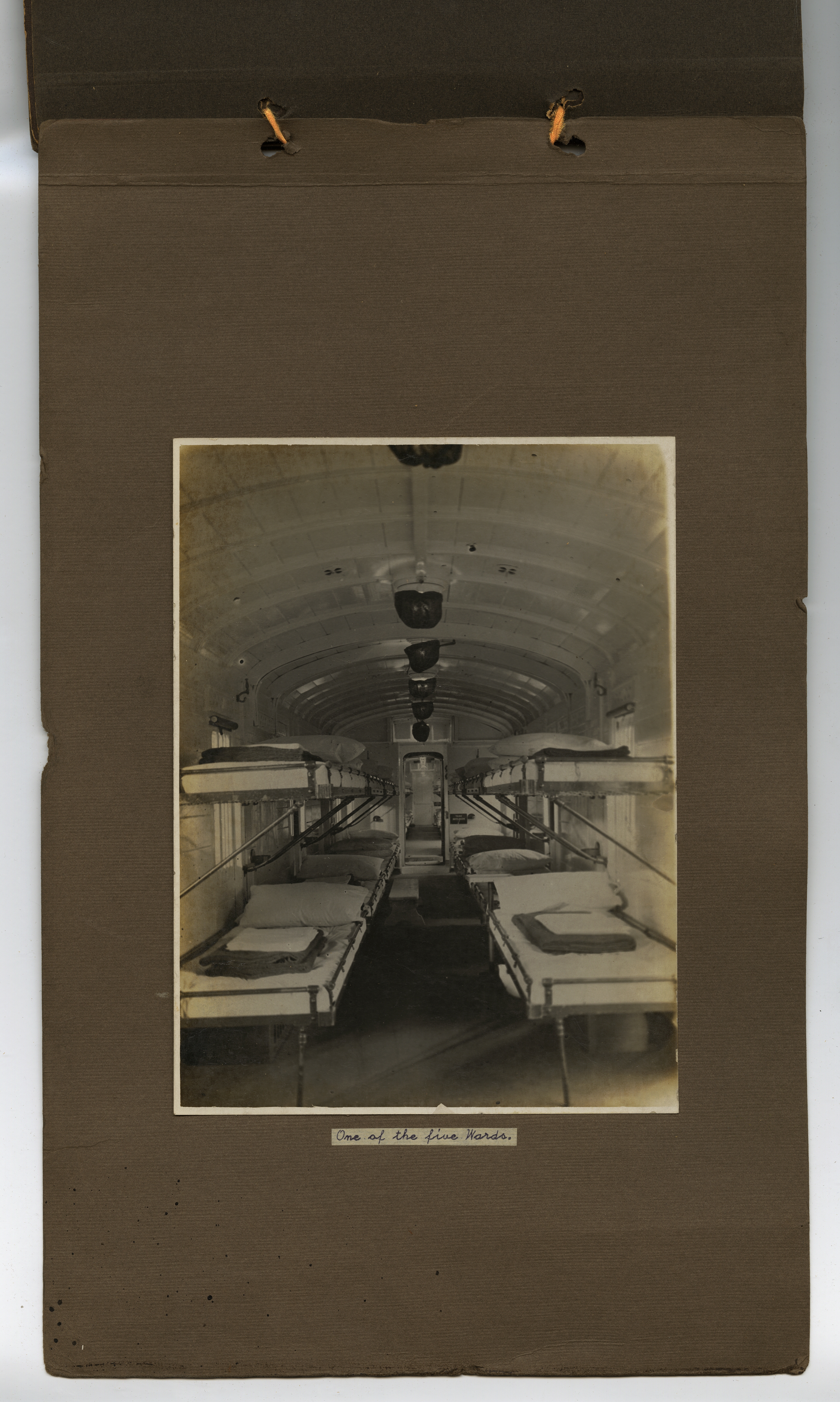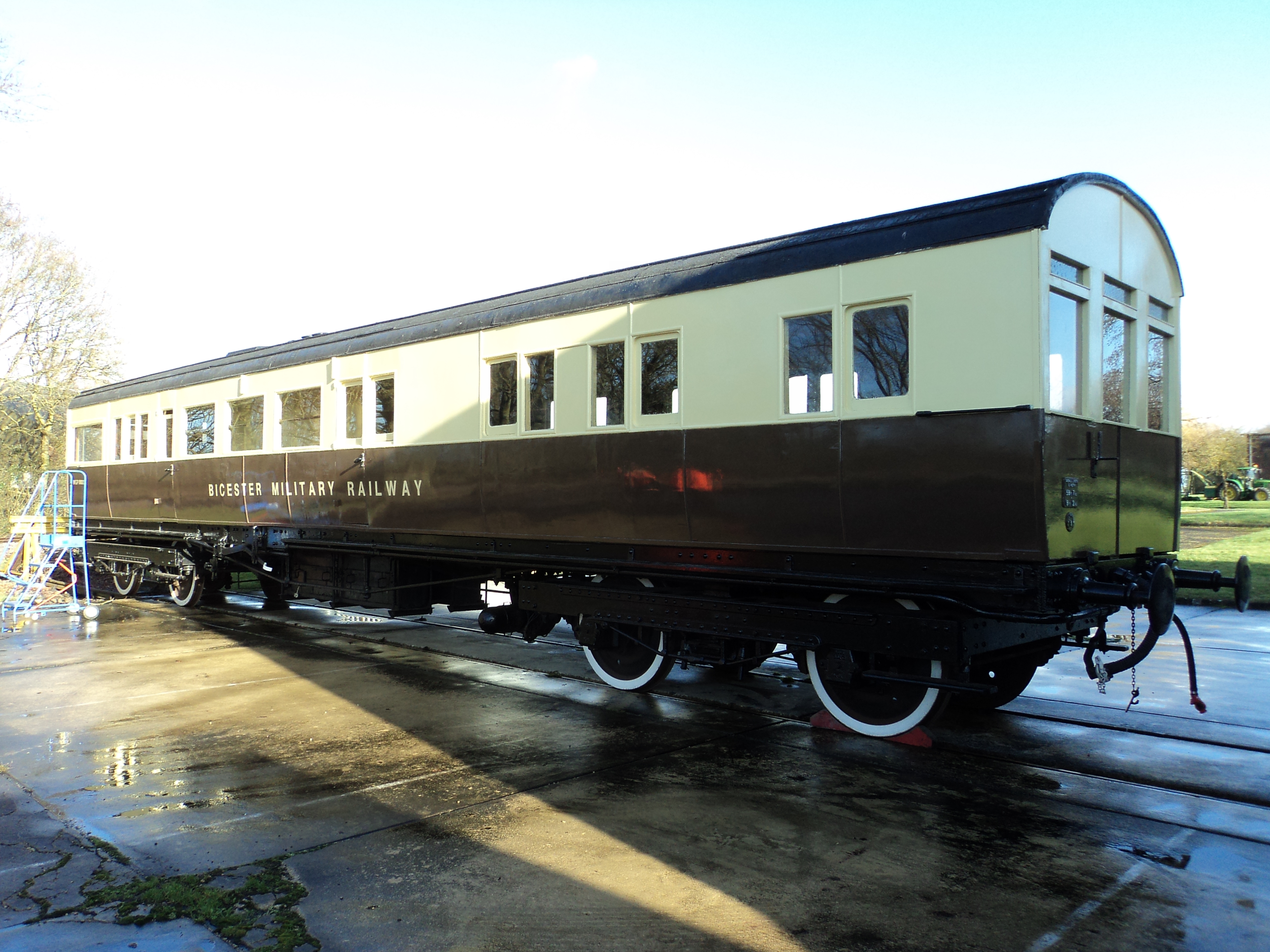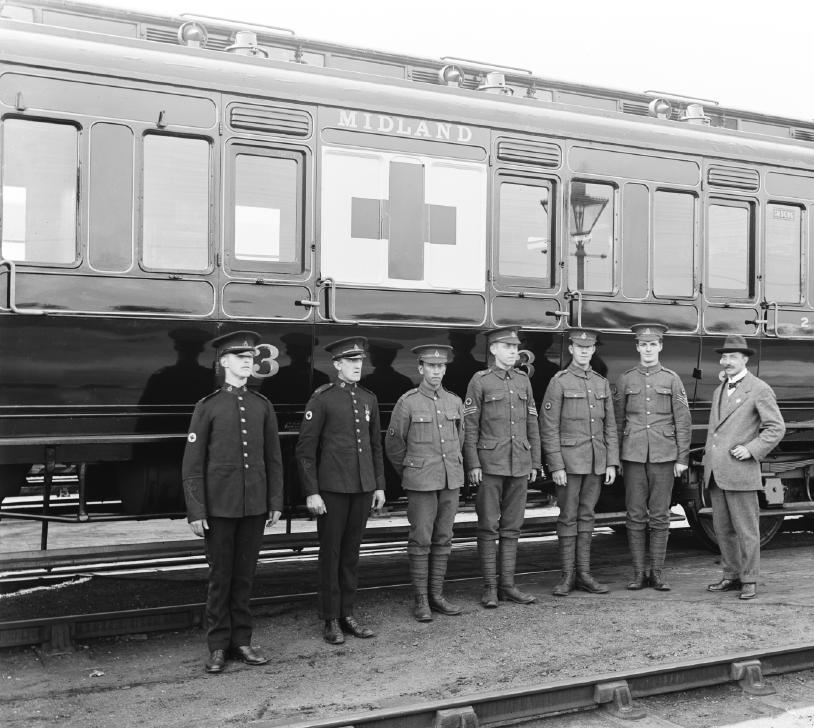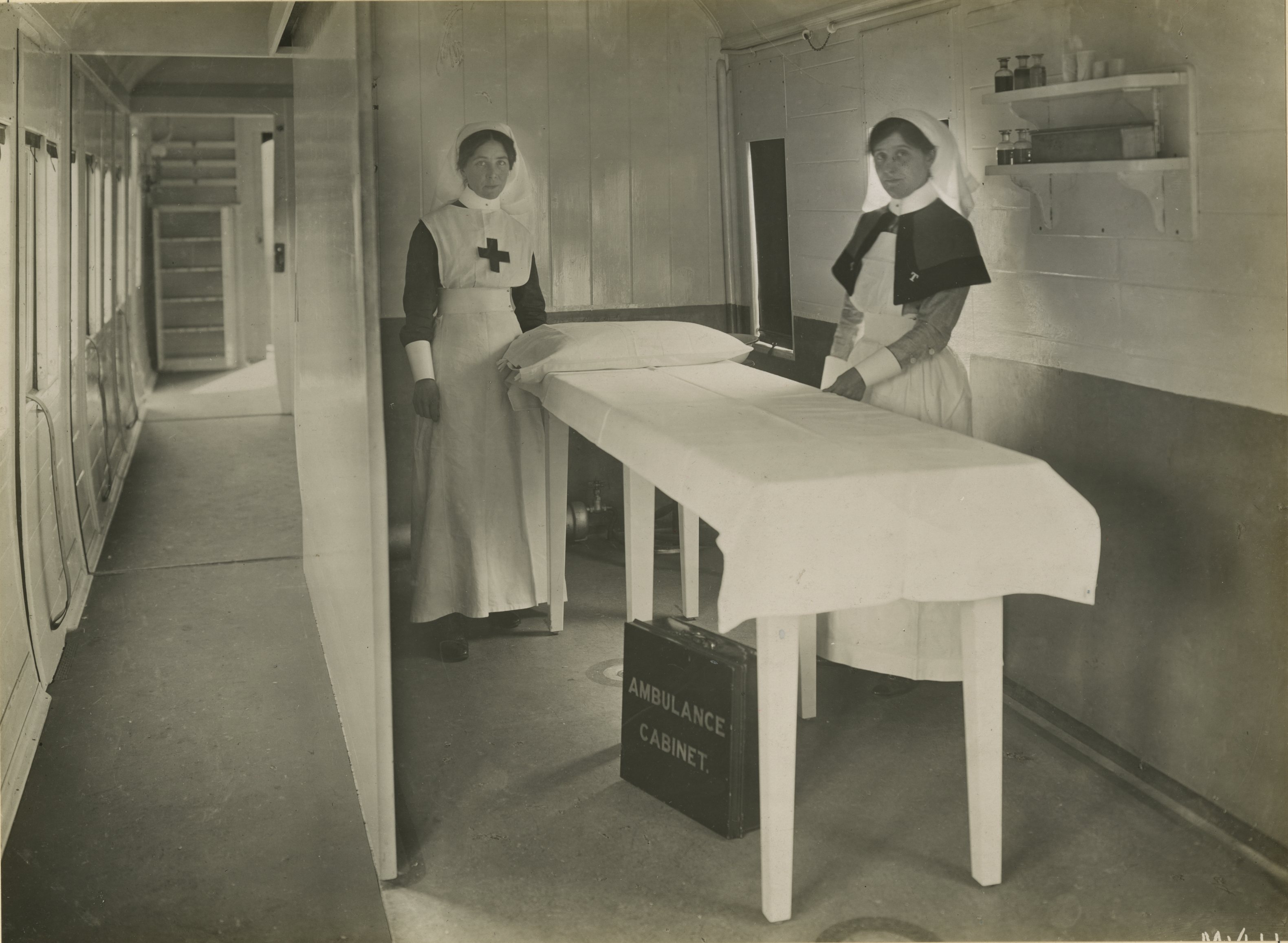From 10 to 17 August 1914 alone, 68,847 men, 21,523 horses, 166 guns, 2,446 vehicles, 1,368 bicycles and 2,550 tonnes of baggage and stores were moved from the UK to France by rail. 184,475 railway workers joined the forces, and many more stayed behind to build the vehicles required for the war effort and to keep the UK’s railways running.
“To all the officials, to all the men, and to the large number of women who are employed by the railways to-day, for their devotion to duty, for the immense amount of hard work which they are doing, and for the long hours in which they are engaged, we owe a real, genuine debt of gratitude.”
Sir Albert Stanley, President of the Board of Trade, 15 May 1918

To commemorate the 100 year anniversary of the First World War, we will focus on a wartime railway story which is perhaps less well-known. From July 2016, our exhibition will tell the story of the ambulance trains used to transport sick and injured troops, both in theatres of war and in the UK. The centrepiece of the exhibition will be a carriage of the type used in these trains, presented as an ambulance carriage Ambulance trains had been used in previous conflicts, but their use in the First World War was on a new scale. If a soldier was injured or fell ill and was sent back to the UK, it was more than likely that he would travel on an ambulance train. The mass evacuation of casualties which was called for simply could not have happened without them.
The ambulance carriage recreation will be based on research carried out into the museum’s incredibly rich, but as yet not fully explored, collection of ambulance train drawings and photographs, some of which have only recently been catalogued. These cover the whole range of carriages, from wards and treatment rooms, to pharmacies and kitchens. Recreated fittings from across these areas, along with first-hand accounts from passengers and staff, will create something of the experience of travelling by ambulance train.


This experience could vary greatly. Some passengers were suffering from terrible injuries, infections and the psychological impact of war, whereas others may only have had minor ‘Blighty’ wounds, which would allow them a welcome return to the UK. Medical staff coped with immense suffering under intense pressure, but they also spent long periods of time waiting for the next trainload of casualties. This time could be spent creating magazines, playing football or staging plays.
“October 25 couldn’t write last night: the only thing was to try and forget it all. It has been an absolute hell of a journey – there is no other word for it. …They were bleeding faster than we could cope with it; and the agony of getting them off the stretchers on to the top bunks is a thing to forget.”
Anonymous Diary of a Nursing Sister on the Western Front (Edinburgh ; London : William Blackwood and Sons, 1915) (general books.net ISBN 978-1-153-60053-8, available to view in Search Engine ref B4-7/242).

We hope to uncover the personal stories of people who travelled and worked on ambulance trains, those who were associated with the station buffets which provided comforts for troops, and railway workers who played their part either as soldiers or back in the UK. If a member of your family was one of these people, or if you have any related objects, photographs or stories, then we would love to hear from you – please contact me at jane.sparkes@nrm.org.uk.
Follow our progress with the transformation of the carriage on this blog, where over the coming months we will also share discoveries from our research, and explore the wider role of the railways in the First World War.
Read more about ambulance trains and the York Sailors’ and Soldiers’ Buffet:
- Coming Home From The Front Line: wartime ambulance train travel
- How 4 ½ million servicemen drank tea at York Station
View our list of fallen World War One railway workers.
Reblogged this on Loco Yard and commented:
Today marks the 100th anniversary since the outbreak of the First World War. To commemorate this historic date the NRM have done a brilliant piece looking at recreating a First World War ambulance carriage.
I am really pleased that Ambulance Trains have come to public notice in this way once again as they have served with distinction in almost every theatre of war since the invention of railways. I wish the NRM well with the project on the Observation Car that I last saw at COD Bicester. I shall follow developments with interest. I was privileged to have safeguarded the heritage of Ambulance Trains through a portion of the Cold War when I was responsible for British Army Ambulance Train operating in the British Army of the Rhine (BAOR) between 1980-1994 serving as the Squadron Commander of the Ambulance Train Squadron RAMC(V). Colonel (Retd) Brian Robertson L/RAMC.